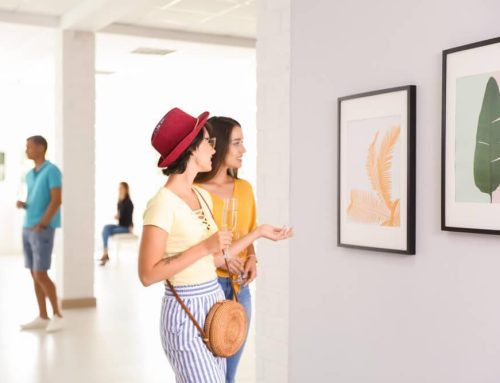Flashback to your tenth birthday. You are about to make a wish and blow out the candles. Suddenly, your mind becomes blank. What can you wish for that will make you seem generous and kindhearted? All you really wanted was a new skateboard.
Suddenly, you have it. You look around the table and say, ”I wish for the world to become a better place,” and you blow out the candles. Your parents’ eyes well up with tears, everyone applauds. You’re thinking, “I better get a skateboard out of this.”
Many of us wish to use our lives to make the world a better place, but not many of us actually achieve it. Girls, boys, families, and money factor in, and sometimes our dreams don’t seem as easy to achieve as they were when you were blowing out candles.
Surprisingly, some of us weren’t blowing smoke when they were blowing out candles. In fact, many of those ten-year-olds went on to pursue their dreams and are saving the planet as we speak.
Here are some social enterprises and entrepreneurs that are impacting the world we live in while the rest of us continue to wish on birthday candles.
Pivot
One of the characteristics of an entrepreneur is the ability to see a problem as an opportunity for success and to change it into one. That’s what 35-year-old Ashley Muspratt was able to do when she saw the treatment of global waste and the challenges it presented to India.
Muspratt was working as a teacher in Ghana where she was shocked to see human waste dumped into the ocean by the truckload daily. This inspired the teacher to do some homework. After researching the problem carefully, Muspratt found out Ghana wasn’t the only place that was negligent with their waste deposits, India and China were engaging in the same practices. What could she do to stop the world from becoming a cesspool of human waste?
Soon, she realized that the obstacle preventing the establishment of well-maintained waste treatment plans was the high cost of operation. Organizations, such as the World Bank was supplying money for facilities that would ultimately become too costly for countries in developing worlds to operate, and the only alternative was to dump the waste in the ocean.
That’s when it occurred to her that waste could be useful! She wasn’t the first to realize the power of poop! Bill and Melinda Gates had awarded grants to people who could find new ways to “reinvent the toilet’ and bring sanitation solutions to over 2.5 billion people worldwide.
Muspratt, however, decided to start small. She focused her energies on bringing energies to industrial manufacturers by building a facility in Mombasa, Kenya. Her financing came from both the Gates Foundation and a French development company along with a letter of intent from a French cement company promising to “cement” the fruition of her mission.
Bridge International Academies
Knowledge is power. When we give people knowledge, we are putting power into their hands.
The Bridge International Academies is dedicated to bringing power to the people of Kenya.
The Bridge International Academies was started seven years ago by Shannon May and her husband, Jay Kimmelman. The for-profit organization now services over 100, 000 students in Kenya, and operates over 369 primary schools, 150 of which were just opened in the past year.
According to Mary Leznicki, the vice president of branding for the company, the reason for the fast growth of the company is, “no different from a Starbucks or MacDonald’s.” She says, “We’re able to grow quickly because of the time and energy put into the company.”
So, what does that time and energy involve? Before schools are built, the company spends time reviewing perspective sites and working with villagers to gain their trust. Although parents pay to send their children to Bridge, many of them live on less than $2/day themselves. However, as compared to what they currently spend on sending their children to private school, Bridge’s pricing is quite affordable.
While providing education to underprivileged children is not something that has never been done before, Bridge is different because it not only guarantees an education, it guarantees quality. On the average, Bridge students score 35% higher in reading and 19% higher in math than their nearby counterparts. Plus, the teachers at Bridge put in eight-hour days, four times as much as their colleagues in other schools.
However, time and energy is not the only thing taking credit for the success of Bridge. Apparently, there’s a system called “Academy in a Box” that the company swears by for all of its management needs, administrative functions, curriculum design, and technology. Every day, Bridge’s teachers check in to access identical lesson plans on their phones and tablet so the team can accurately track the progress and analyze the success of the curriculum.
Leznicki says, “We need over half a million students to be profitable.” If Bridge Academy can reach that goal, they won’t be the only ones profiting.
Intendu
Nintendo for brain rehabilitation? Founder Son Preminger’s inspiration for Intendu came when her father suffered a brain injury during the time Son was in college. She was shocked to see that how after her father’s brief rehabilitation in the hospital, cost cuts prevented him from receiving follow up in home treatment from healthcare workers. Having earned a doctorate in neuroscience, Son knew that practicing cognitive functions could potentially restore them, and feared that without continued therapy, her father’s progress would level off, if not decline completely.
That’s when Preminger had that a-ha moment that lead to the invention of Intendu. Intendu is a brain-body console for people with brain impairments. Each one comes with a plug and play camera with built-in video game software, so the patients can play their ways to a sharper mind.
As the results of Preminger’s hard work, Intendu has been a strong presence in the gaming industry and, since its 2014, the launch has developed from a news portal into the first online B2B global platform and is positioned to become a fixture in many more homes in the years to come. To Son, it’s just another example of using brain power to keep brain power strong.
Andela
Success can come of many things. It can be an innate ability or simply persistence, but it also requires opportunity. That’s what Jeremy Johnson aimed to create for young Africans when he began Andela.
Andela is a startup company that teaches computer science to Africans who are interested in Web design. It works by imparting the computer skills necessary for web development to the students and them connecting them to a company looking for talented individuals.
In Nigeria, according to Johnson, there is a 90% rate of underemployment and a 50% rate of unemployment among youth. At the same time, there is a huge number of companies in the US posting IT positions that never get filled. Here, Johnson saw the potential for a win-win situation.
“The reality,” says Johnson, “is that there are not enough talented developers in the world.” The solution, he thought, lay in Africa, the home to seven of the fastest growing economies in the world.
In order to recruit students, Andela uses an online aptitude test followed by phone interviews. Those who qualify are then sent to a two-week intensive boot camp from which Johnson says, “People who haven’t written a line of code” emerge “building websites.”
And the win-win? Companies can get qualified IT workers for half the cost of a US-based developer and African students receive middle-class wages.
FEED
Addressing problems of poverty is a road well-traveled. For most entrepreneurs, it makes more sense to join up with well-established companies rather than starting their own. That was something Lauren Bush took into consideration when she came up with the idea for FEED Projects.
Lauren experienced her first encounter with severe poverty after a visit to Guatemala with the United Nations World Food Programme. “They have an incredible network of offices around the world and really have their finger on the pulse of what’s happening with hunger,” she explains. “I saw they were lacking a consumer-facing way of raising money and that’s what we bring to the table that’s unique in the hunger space.”
FEED’s consumer-facing way of raising money is by manufacturing totes and handbags to provide children with school meals. Each bag is stamped with the number of meals it will fund.
FEED’s non-consumer facing way of making a difference is by employing local artisans to make the products the company sells. The company works with the craftspeople of Colombia, Guatemala, and Kenya to create leather bags, and is pleased to announce its new line of leather accessories set to kick off this year.
And don’t think that just because FEED is a charitable venture, it’s not getting some buzz in the world of high-end fashion. You can find FEED products in Harrod’s in the UK as well as in some of the trendiest Japanese and United States clothing retail stores. Although further global expansion is in the works, FEED has already provided more than 85 million school meals to hungry children and getting some very good “FEED back.”
Jerry Bottle
Attention: There is currently a plastic patch floating in the Pacific Ocean six times the size of England. If it continues to grow, there will literally be more plastic than there is fish in the ocean.
Jerry Bottle knows all about this plastic patch and other ones like it in our ocean and they’re selling their bottles to make sure they start disappearing asap. Not only does Jerry’s metal lid bottles offer alternatives to plastic, but the profits also go to water projects all over the world, so plastic patches shrink while you drink.
Plus, as an added extra bonus, each Jerry Bottle comes with the coordinates of the location of the ocean project your money is going to, so when we get a cleaner ocean, you get bragging rights.
Vivid Roots
When most of us were in our early twenties, we were probably too busy fighting for our rights to party than we were about fighting for clean water, yet the four young adults from Vivid Roots dedicated their lives to just that environmental pursuit.
When you lay eyes on Dallas Crum, Dylan Carlson, Trevor Bostrom, and Connor Kingsbury, one of the first words that you might use to describe them are “all American.” These four grew up in Boise, Idaho, and have red blood flowing through their veins. However, these days their attentions are focused more on Guatemala and Ecuador.
The Water for Life Vivid Roots program works by implementing wells, water filtration, and distribution systems and also by educating communities on the running and maintenance of their own systems for a sustainable clean water source.
When you buy the cool gear (tees, tanks, caps, and jerseys for men women and kids) from Vivid Roots, 100 percent of the profit goes to building these water systems. Even better, Water for Life creates jobs. The local contractors from the villages are the ones who work to build these systems. On the average, every $1 invested into Vivid Roots turns into $4 – $12 for the local economy, and along with the benefits of the project, that’s a pretty worthwhile investment.
Do you have an idea for a social enterprise that you’re just waiting to unveil? Let us know all about it. Sometimes, sharing a dream is the first step in making it come true.






Leave A Comment